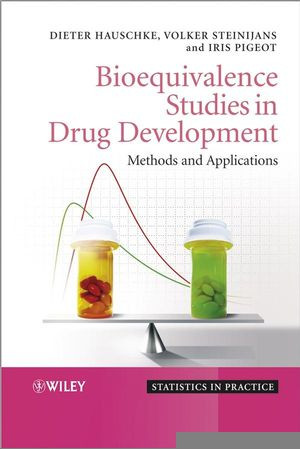

Most ebook files are in PDF format, so you can easily read them using various software such as Foxit Reader or directly on the Google Chrome browser.
Some ebook files are released by publishers in other formats such as .awz, .mobi, .epub, .fb2, etc. You may need to install specific software to read these formats on mobile/PC, such as Calibre.
Please read the tutorial at this link: https://ebookbell.com/faq
We offer FREE conversion to the popular formats you request; however, this may take some time. Therefore, right after payment, please email us, and we will try to provide the service as quickly as possible.
For some exceptional file formats or broken links (if any), please refrain from opening any disputes. Instead, email us first, and we will try to assist within a maximum of 6 hours.
EbookBell Team

4.8
34 reviewsBioequivalence Studies in Drug Development focuses on the planning, conducting, analysing and reporting of bioequivalence studies, covering all aspects required by regulatory authorities. This text presents the required statistical methods, and with an outstanding practical emphasis, demonstrates their applications through numerous examples using real data from drug development.
Bioequivalence Studies in Drug Development is written in an accessible style that makes it ideal for pharmaceutical scientists, clinical pharmacologists, and medical practitioners, as well as biometricians working in the pharmaceutical industry. It will also be of great value for professionals from regulatory bodies assessing bioequivalence studies.Content:
Chapter 1 Introduction (pages 1–16):
Chapter 2 Metrics to Characterize Concentration?Time Profiles in Single? and Multiple?Dose Bioequivalence Studies (pages 17–36):
Chapter 3 Basic Statistical Considerations (pages 37–68):
Chapter 4 Assessment of Average Bioequivalence in the RT/TR design (pages 69–104):
Chapter 5 Power and Sample Size Determination for Testing Average Bioequivalence in the RT/TR Design (pages 105–122):
Chapter 6 Presentation of Bioequivalence Studies (pages 123–155):
Chapter 7 Designs with more than Two Formulations (pages 157–173):
Chapter 8 Analysis of Pharmacokinetic Interactions (pages 175–203):
Chapter 9 Population and Individual Bioequivalence (pages 205–282):
Chapter 10 Equivalence Assessment for Clinical Endpoints (pages 283–306):